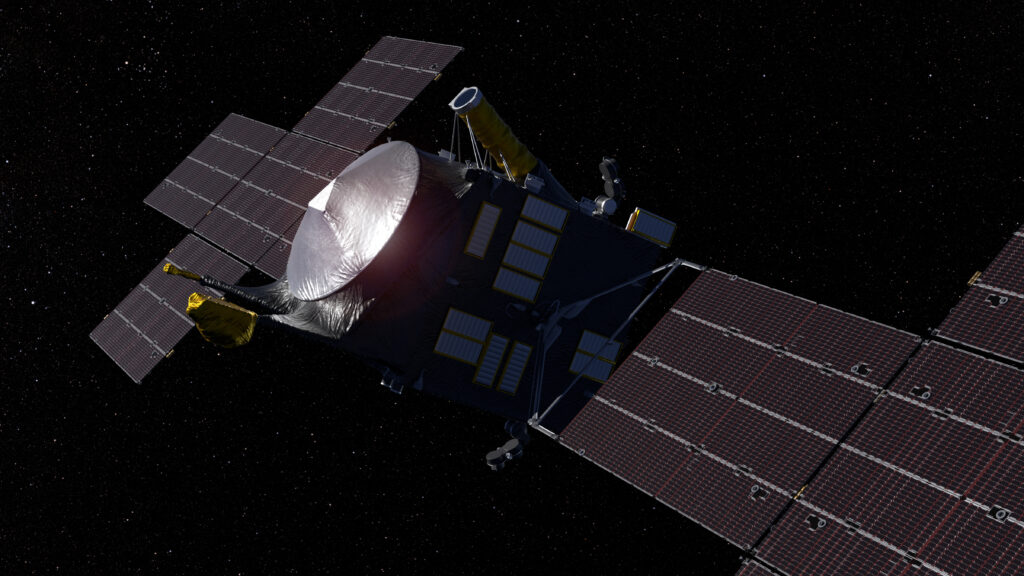NASA specialists have begun the final stage of assembling the interplanetary probe Psyche. This is stated in a message posted on the mission’s Twitter account.
The #NASAPsyche spacecraft is nearly complete ahead of its targeted launch in October.
Technicians have begun final assembly, test, and launch operations, with only the solar arrays and the imagers left to install.
Learn more about the mission >> https://go.nasa.gov/44dWJ4V pic.twitter.com/KAVaYiPvWB
— NASA Marshall (@NASA_Marshall) July 8, 2023
The goal of the Psyche mission is Psyche, a 280-kilometer asteroid with a high metal content. Many scientists suspect that it is a fragment of the core of a protoplanet that collapsed at the dawn of the existence of the Solar System. Psyche should check this assumption.
Initially, the launch of Psyche was supposed to take place back in August 2022. It was planned that the spacecraft would reach its goal in early 2026. But in the end, NASA had to postpone the launch for more than a year. The reason was the unavailability of ground equipment, which made it impossible to perform all the required checks and tests. During the subsequent audit conducted by an independent commission, NASA decided to postpone the launch of Psyche to October 2023.
At the moment, Psyche is located on the territory of the Marshall Space Center. NASA specialists are assembling the spacecraft.
In the near future, NASA engineers will begin final assembly operations, during which solar panels and cameras will be installed on Psyche. After that, the probe will undergo a series of tests designed to certify its readiness to withstand a flight in interplanetary space.

Upon completion of the tests, Psyche will be installed under the head fairing of the Falcon Heavy rocket. The ballistic window for launching the spacecraft will be open from October 5 to October 25, 2023. The flight plan assumes that Psyche will perform a gravitational maneuver in the vicinity of Mars in 2026. This will allow it to reach Psyche in August 2029 — 3.5 years later than originally expected.
Follow us on Twitter to get the most interesting space news in time
https://twitter.com/ust_magazine

